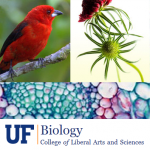Do you have a creative assessment you would like to share with the UF teaching community? Use this Google form to submit the assessment for inclusion in our creative assessment database.
Class Size
Discipline
Assessment Type
Time Requirement for Students
In freshman-level large courses we typically use multiple choice questions for exams. Here I describe a post-exam analysis that students can do for a completion grade and thereby benefit from thinking through what they missed on the exam. They can work with anyone else and use their notes. Students are asked to analyze upto 5 of the questions they got wrong on their multiple choice midterm exam 1, and they earn a few completion points. They do so after the exam is released, so they can see the problems they got right/wrong with the correct answer choice marked. In physics, students often develop misconceptions that can be difficult to catch unless they examine their errors, hence this method is quite effective in helping the student realize where they went wrong and why. It also helps them to see how to study more effectively for the next exam. Many students who do not do well tend to not analyze their mistakes unless you offer them points for doing so.
More Details
In this semester-long assessment, students read a fun popular science book that relates to the course material. Each week, a group of students leads the discussion of a chapter by annotating the chapter in Perusall with a scientific paper link including a summary and questions, adding questions for other students to answer, and following up with their peers’ annotations. The other students collaborate as a class to annotate the chapter with their thoughts on the scientific papers from the leaders, future research ideas, comments relating the book to lecture material, images and videos, and other questions and comments.

Computing students are expected to contribute to large unfamiliar codebases as they transition from university to industry settings. While core computing courses provide students several opportunities to write code or reuse code from standard libraries, students have less opportunities to read code or extend codebases written by other programmers. This assessment uses a novel instructional strategy, Build Programming, which is designed to promote code reading and comprehension in computing courses. In this strategy, a student (1) solves a programming problem, (2) is assigned a new codebase or solution from a peer who solved the same problem, and (3) is asked to extend the assigned peer’s code to solve another programming problem. This allows a student to understand and extend an authentic codebase which is situated in a context that they are familiar with. Thus, the assessment intends to scaffold code reading whereby the familiar context of the problem acts as a scaffold while the student is expected to navigate the structural and semantic differences in the assigned codebase to build a new product.

Students read 1-2 page articles related to fun, expanded topics related to the textbook chapters and course content. At the end of each concept, students answer 4 questions: two are usually comprehensive/knowledge-based and two are creativity/analytical-based. Each Narrative has a rubric and general key. Some of the Narratives have creative submission styles, where students may submit their answers to the four questions in images, audio recordings, or written format. This alternate submission format promotes creativity and students to practice various media formats.

During this month-long scaffolded assignment, students collaborate in small groups to create educative digital breakout games on a relevant topic of interest. The assessment is grounded in instructional frameworks such as Constructivism, Understanding by Design, and Design Thinking. It follows a project-based structure guided by breakout game research that consists of the following steps: 1) Choose a topic, 2) Identify learning outcomes, 3) Craft a scenario, 4) Design instructional puzzles, 5) Create lock boxes, 6) Build the game website. With sufficient scaffolding, no prior technical skills are needed!
More Details
In this assessment, student collaborate to investigate a large messy real data set. Students must determine a question that can be answered from the data, build two models to answer that question, chose the better model and explain why it was chosen and finally attempt to answer the proposed question. The students will use multiple regression methods in the statistical software package (R). After finishing the assignments, the students write a reflection to celebrate what didn’t work as well as what they learned.
More Details
In this half-semester long assignment students select a real-world topic related to cognitive neuroscience in one of four ‘flavors’ – Pop culture (NeuroPop); cutting edge technology (NeuroEdge); Health (NeuroClinic); and popular myths (NeuroMyths). Students then research the connection between their topic by searching empirical cognitive neuroscience literature and present their findings to the class in an uploaded recorded video (or live presentation in front of the class). In the second phase, students watch each others’ Deep Dives and respond with comments and questions (either a Canvas discussion board or live in person discussions can be used).

During this end-of-semester project, students each create ePortfolios to provide a collection of evidence regarding their learning in a given course. Students compile course artifacts into a website that they create using a development tool of their choice (i.e., Wix, Weebly, Google Sites, Word Press, etc.).
More Details
Technical interviews act as gatekeepers for securing jobs in the tech industry. In this assessment, students were introduced to the technical interview process through a panel consisting of teaching assistants who have previously cracked technical interviews. This was followed by a role play exercise where two teaching assistants act as an interviewer and an interviewee and go through a mock technical interview. After the role-play, students were asked to work in pairs, interviewing each other, first in the middle of the semester (Week 8) and second in the last week of the course (Week 14). They were asked to work with self-selected peers in the first interview and were randomly paired with another student in the second iteration. This was done so that we could scaffold the social interaction and reduce interview anxiety. This assessment was designed to generate awareness of the technical interview process and build students’ confidence in succeeding them in the future.

During this several week-long collaborative project, students engage in inquiry-based learning to investigate a worthy question, issue, problem, or idea related to a relevant topic. Inquiry-based learning is grounded in research as a means of engaging students in active, self-directed learning, and provides opportunities for building 21st-century skills (i.e., Collaboration, communication, critical thinking, and creativity).
More Details
Students create a page in a chapbook in which they reflect on the question “what is a man?” Addressing their page to a man they care about, they craft an answer to the question that refers to a text that is personally meaningful to them and/or to material from the course. The instructor prints all the pages and binds them into a booklet, and all students receive their own copy.
More Details
The ‘phone a friend’ task meets two aims at once: ensuring students have prepared for class, and encouraging them to develop their oral range of assessment types (including a presentation) that are required to be completed in a voiced form.
More Details
This scaffolded assignment spans the length of the semester where students first propose a research topic they are passionate about and then undergo four primary project components to design a research project as they would to apply for grant funding to conduct the study in a lab setting. The first component is the literature review and background, the second is the methods that comprises the protocol and statistics, the third is the discussion which includes expected results, limitations, and future directions, and the final fourth is the research poster, where students develop a scientific poster and present it in under 3 mins via audio and video recording. Each component includes instructor and peer feedback so students can improve between submissions.

Students respond to prompts through Flipgrid, the video recording platform, related to fun topics related to physiology as an attempt to (1) engage with peers, (2) apply topics related to the course content, and (3) think outside the box in a creative way to retain passion and interest on the subject matter. Students must video-comment on 1-2 peer posts, and are able to use emojis, embedded links, and resources just like in social media platforms like TikTok.
